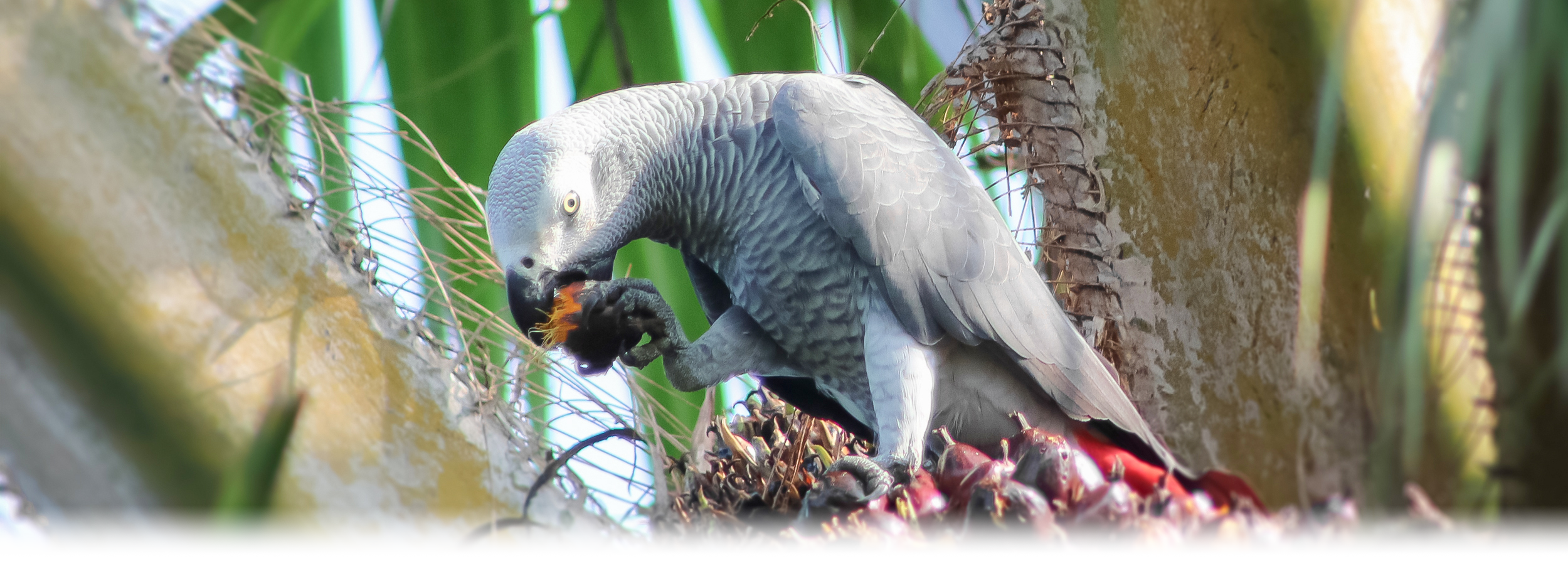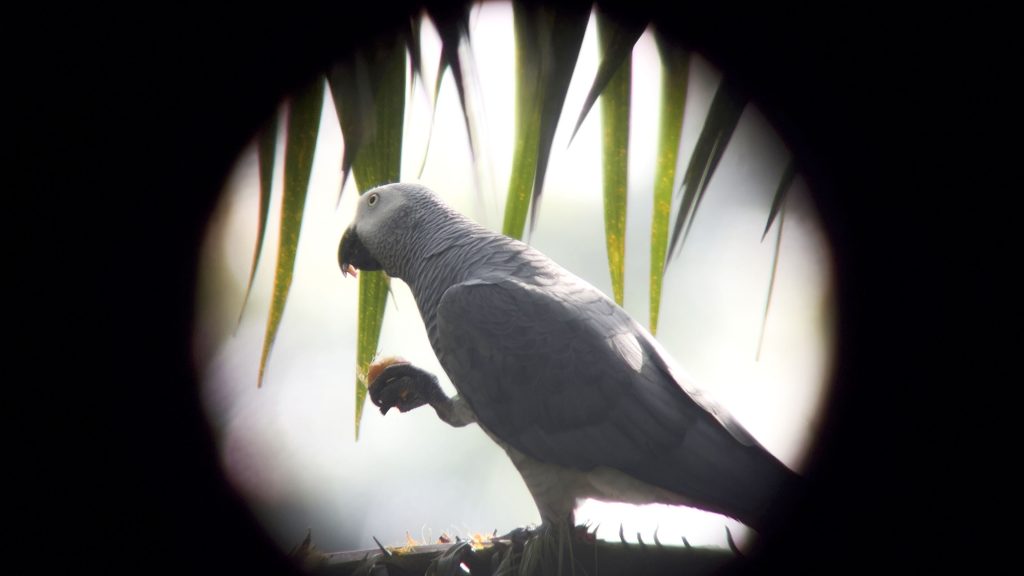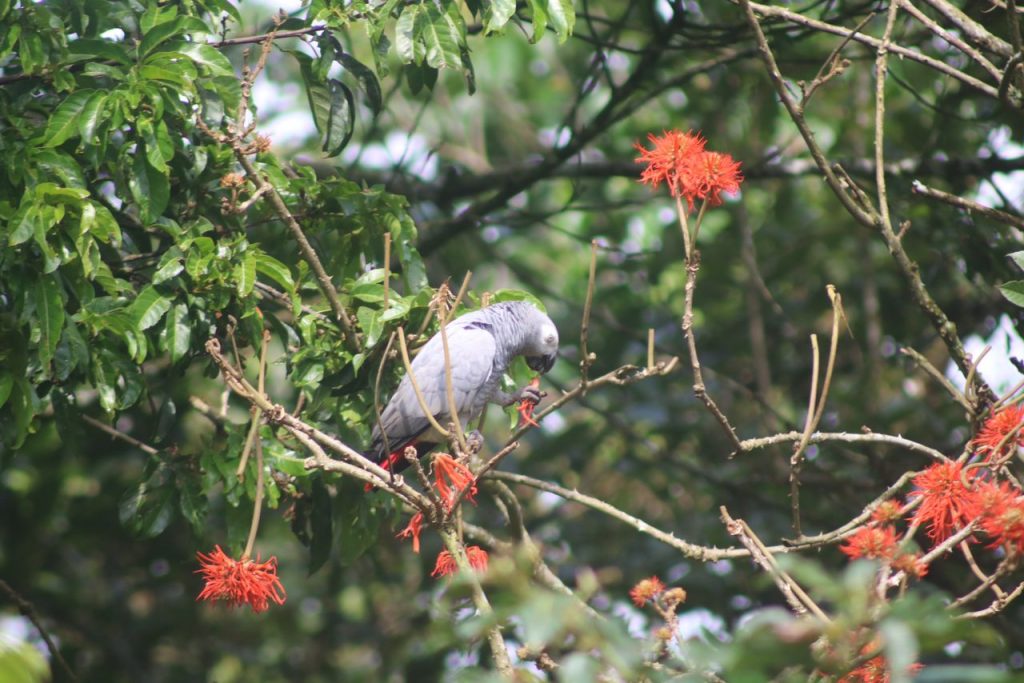
The African Grey Parrot, Psittacus erithacus or Kasuku
The African Grey Parrot is a large, broad-winged parrot with a short, square-ended scarlet red tail, creamy-yellow eyes, with whitish sides to the face, and scaly paler dove-grey fringes to the head and neck. The plumage of both sexes are alike. The immature bird is similar to an adult but has a darker tail and grey eyes. Pairs or small parties are locally common in suitable forests from 700 – 2,300 m elevation in Uganda, but are now very scarce elsewhere in East Africa. Their voice in flight and perched gives a great variety of loud slurs and raucous notes, some of them explosive.
African greys bond as pairs at the age of five to seven years. They live and stay together for many years and some remain together for life. Their breeding season mostly occurs in the rains. The average lifespan in the wild is estimated to be 45 years.

Intelligence
According to Dr. Irene Pepperberg, who has been researching the cognitive abilities of grey parrots in the laboratory, grey parrots have the intelligence of a five-year-old child. Her famous collaborator, the grey parrot Alex, could use more than 100 human words, he could tell the colours, shapes and materials of objects, and categorize them. He would even create new words like “banarry” – a combination of banana and cherry – which he used for apple.
You can observe many more behaviours in the wild that show how intelligent grey parrots are. Here are some examples:
Individuals or pairs come to check on the feeding tree at the perfect time when the tree has fruits, buds or flowers.
Before parrots land in a tree for feeding, they first fly around scanning for any security threats, such as eagles or humans.
Grey parrots mimic the calls of common birds in their surroundings, such as the lizard buzzard, the red-chested cuckoo and the western black headed oriole, and in cities, they sometimes mimic the horns and sounds of vehicles.
Greys will keep quiet when they hear others in flight when there is a shortage of food, but if food is abundant, they will then reply to the calls of their friends flying by.
The cleaning of hands and mouth after food is essential for good health. Grey parrots rub their bills on branches to clean them after feeding.

Endangered Species
Grey parrots are a highly endangered species listed under Appendix 1 by CITES. Their populations have declined tremendously in the last few decades, in some places up to 99 %. The trade in grey parrots living in the wild has been prohibited since 2016. Nevertheless, the main threats to these birds are the still ongoing illegal pet trade and habitat loss.